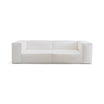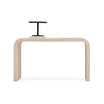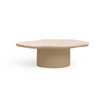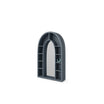When it comes to furnishing your home, investing in high-quality furniture is crucial. Quality furniture not only enhances the aesthetics of your space but also ensures durability and longevity. However, with so many options available in the market, it can be challenging to recognize and spot high-quality furniture. To help you make informed decisions, we have compiled a list of the 10 best ways to identify quality furniture.
1. Check the Materials Used:
One of the first things to consider when assessing the quality of furniture is the materials used in its construction. High-quality furniture is often made from durable and long-lasting materials such as solid wood, genuine leather, or high-quality fabric. These materials not only add to the overall aesthetic appeal but also ensure the furniture's durability. On the other hand, furniture made from particleboard or low-quality materials may not withstand regular use and may show signs of wear and tear over time.
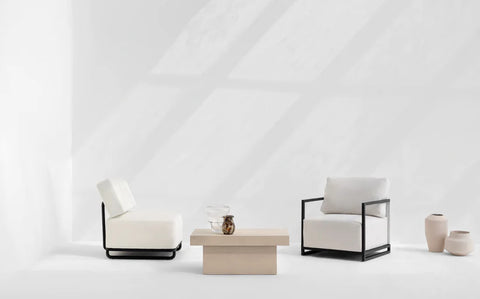
Solid wood furniture, such as oak or maple, offers superior durability due to its dense grain and robust structure, making it resistant to wear over time. In contrast, particleboard is composed of wood particles bonded with adhesives, rendering it more susceptible to moisture damage and structural weakening.
Here are some tips to assess the durability of furniture materials. Start by checking the weight. Heavier usually indicates denser, more durable materials. Next, tap on surfaces. Solid wood produces a dull thud, while hollow-sounding panels often indicate low-quality composites. You can also inspect edges and corners. Chipping or laminate peeling signals lower durability.
2. Examine the Construction:
The construction of furniture plays a significant role in its overall quality and longevity. Look for well-constructed furniture with sturdy joints and reinforcements. Quality furniture will have strong and secure connections, such as dovetail or mortise and tenon joints. These types of joints provide superior strength and stability compared to simple butt joints or staples. Avoid furniture with weak or flimsy construction, as it may not withstand the test of time.
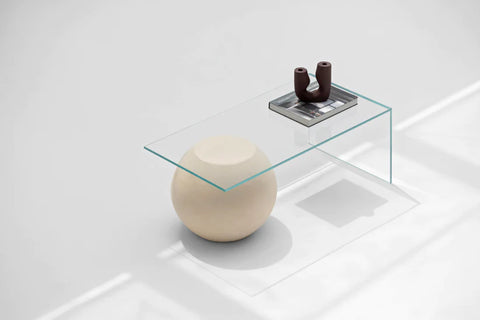
3. Inspect the Finish:
The finish of furniture not only enhances its appearance but also protects it from damage. A quality furniture piece will have a smooth and even finish, with no visible rough spots or uneven coloring. Look for furniture with a high-quality stain or paint finish that is resistant to chipping or peeling. Additionally, a well-applied finish will also make the furniture easier to clean and maintain.
4. Consider the Upholstery:
If the furniture has upholstery, it is essential to assess its quality. Look for high-quality fabric or leather that is well-stitched and tightly secured. The upholstery should be durable and resistant to wear and tear. Additionally, consider the comfort and feel of the upholstery. Quality furniture will have upholstery that is soft and comfortable, providing a pleasant seating or sleeping experience.

High-quality leather is durable and ages well, developing a patina over time. It requires regular conditioning to prevent drying and cracking. On the other hand, Synthetic fabric is highly resistant to stains and wear, making it ideal for households with children or pets. It is easy to clean with mild detergent and water. Velvet offers a luxury feel, for sure. But it is prone to crushing and requires gentle maintenance, such as regular vacuuming with a soft brush attachment.
5. Evaluate the Comfort:
Comfort is a crucial factor when it comes to furniture, especially pieces like sofas, chairs, or beds. Sit or lie on the furniture to assess its comfort level. Quality furniture should provide adequate support and cushioning for a comfortable seating or sleeping experience. Pay attention to the padding and filling used in the furniture. High-quality furniture will have cushions that retain their shape and bounce back after use, ensuring long-term comfort.

Let’s clarify the evaluation process with a simple example. Suppose you are buying a bed. What do you look for in the bedframe to ensure both comfort and durability?
For starters, you should look for solid materials like oak, maple, or high-gauge steel. These resist warping, sagging, and long-term wear better than softwoods or composite materials.
The next thing to check is a sturdy slat system. Slats should be wide (at least 2–3 inches), evenly spaced (no more than 3 inches apart), and preferably made from solid wood or reinforced metal. This supports the mattress evenly and prevents sagging.
A central support beam is always a nice touch. For full, queen, or king sizes, a center beam with legs adds critical support and prevents mid-frame collapse over time. And, most importantly, a well-built frame should be silent. Test for creaks or shifting when you move on it—noise usually indicates loose joints or poor fit.
6. Examine the Hardware:
The hardware used in furniture, such as hinges, drawer slides, or handles, can give you insights into its quality. Quality furniture will have sturdy and durable hardware that can withstand regular use. Check that the hardware is securely attached and functions smoothly without any wobbling or sticking. Poor-quality hardware can lead to functionality issues and may require frequent repairs or replacements.
Here’s how you can test the strength of furniture joints without disassembling:
First of all, apply gentle pressure. Grip opposite ends of the piece and gently rock or twist it. Sturdy joints won’t flex, wobble, or creak under moderate force. Next, listen carefully for sounds. Any squeaking, cracking, or clicking noises suggest weak or loose joints. Next, look closely at corners or seams. Tight, flush joints with no gaps indicate good construction. Visible screws or staples are signs of lower-quality joinery. Finally, for tables or chairs, lift one leg slightly—if the opposite leg lifts evenly and the structure stays rigid, the joints are strong.
7. Consider the Brand Reputation:
When purchasing furniture, it is worth considering the reputation of the brand or manufacturer. Look for reputable brands known for producing high-quality furniture. Established brands often have a track record of craftsmanship and durability. Research the brand's history, customer reviews, and ratings to get an idea of their reputation. A brand with a positive reputation is more likely to deliver quality furniture.
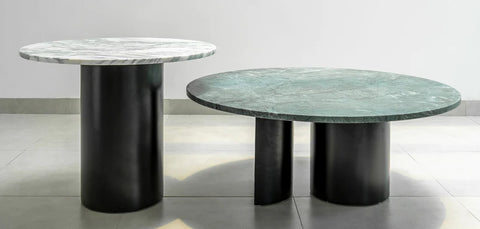
Here’s a quick chart showing you the customer service reputation and warranty offers of some of the most popular furniture companies' stores in the UAE:
|
Brand |
Warranty Offer |
Customer Service |
|
IKEA UAE |
10-25 years |
Responsive; 365-day return policy; strong online and in-store support |
|
Pan Emirates |
1-5 years |
Fairly reliable; some variation in delivery and support quality |
|
The One |
2-5 years |
Personalized service; responsive to follow-ups, especially on premium items |
|
Home Centre |
1-3 years |
Efficient service, 14-day return window, good post-purchase communication |
|
Marina Homes |
5+ years |
High-end support, detailed in-store guidance, and after-sales follow-up |
|
Klekktic |
5 years |
Boutique-level service; responsive through WhatsApp and email; locally made to order |
8. Look for Certifications:
Some furniture may have certifications or labels indicating that it meets certain quality standards or environmental regulations. Look for certifications such as FSC (Forest Stewardship Council) for sustainably sourced wood or CertiPUR-US for foam cushions without harmful chemicals. These certifications provide assurance that the furniture has been manufactured responsibly and meets specific quality criteria.

9. Consider the Price:
While price alone is not always an indicator of quality, it can provide some insights. Extremely low-priced furniture may be made from subpar materials or have inferior construction. On the other hand, excessively high-priced furniture may not necessarily guarantee superior quality. Compare prices of similar furniture pieces to ensure you are getting a fair value for the quality offered. Consider your budget and prioritize quality within your price range.
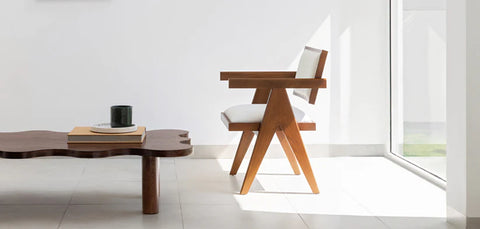
10. Seek Expert Advice:
If you are unsure about identifying quality furniture, it can be helpful to seek advice from interior designers, furniture experts, or knowledgeable salespeople. They can provide guidance and help you make informed decisions when selecting high-quality furniture. Their expertise can assist you in understanding the nuances of furniture quality and selecting pieces that align with your preferences and requirements.
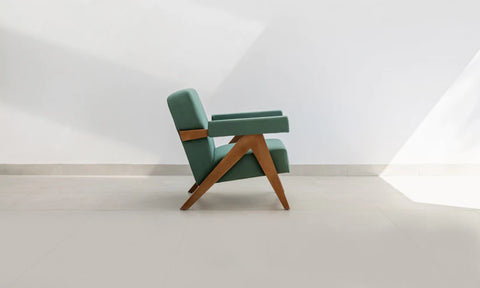
By following these 10 best ways to identify quality furniture, you can make confident choices and invest in furniture that will enhance your living space for years to come. Remember to consider factors such as materials, construction, finish, upholstery, comfort, hardware, brand reputation, certifications, price, and seek expert advice when needed.
For a wide range of high-quality furniture options, you can visit Klekktic. They offer a curated selection of furniture from reputable brands, ensuring both style and quality in their offerings.Sure! Here's a table summarizing the information in the article:
| Ways to Identify Quality Furniture |
|---|
| 1. Check the Materials Used |
| 2. Examine the Construction |
| 3. Inspect the Finish |
| 4. Consider the Upholstery |
| 5. Evaluate the Comfort |
| 6. Examine the Hardware |
| 7. Consider the Brand Reputation |
| 8. Look for Certifications |
| 9. Consider the Price |
| 10. Seek Expert Advice |
FAQ
1. How can I identify high-quality furniture?
To identify high-quality furniture, you can check the materials used, examine the construction, inspect the finish, consider the upholstery, evaluate the comfort, examine the hardware, consider the brand reputation, look for certifications, consider the price, and seek expert advice. These factors will help you make informed decisions.
2. What materials should I look for in quality furniture?
High-quality furniture is often made from durable materials such as solid wood, genuine leather, or high-quality fabric. Avoid furniture made from particleboard or low-quality materials.
3. How can I assess the construction of furniture?
Look for well-constructed furniture with sturdy joints and reinforcements. Quality furniture will have strong and secure connections, such as dovetail or mortise and tenon joints.
4. What should I look for in the finish of furniture?
A quality furniture piece will have a smooth and even finish, with no visible rough spots or uneven coloring. Look for furniture with a high-quality stain or paint finish that is resistant to chipping or peeling.
5. How can I evaluate the comfort of furniture?
Sit or lie on the furniture to assess its comfort level. Quality furniture should provide adequate support and cushioning for a comfortable seating or sleeping experience.
6. Why is brand reputation important when buying furniture?
Considering the brand reputation is important as reputable brands are known for producing high-quality furniture. Research the brand's history, customer reviews, and ratings to get an idea of their reputation.
7. Should I consider certifications when buying furniture?
Yes, certifications such as FSC (Forest Stewardship Council) for sustainably sourced wood or CertiPUR-US for foam cushions without harmful chemicals can provide assurance of quality and responsible manufacturing practices.

